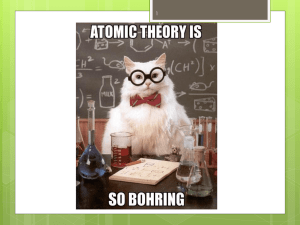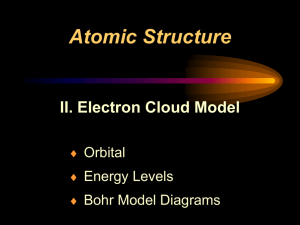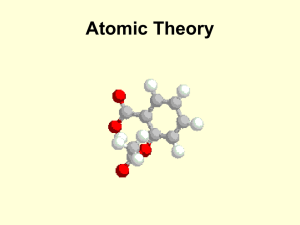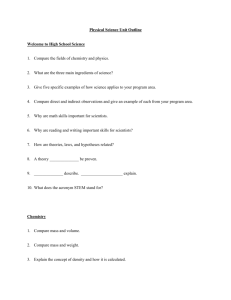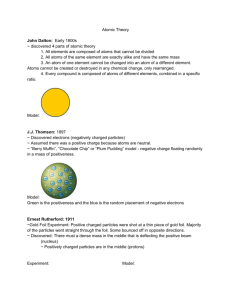Atomic Theory - STERS 4 - Science Teaching 6-12
advertisement
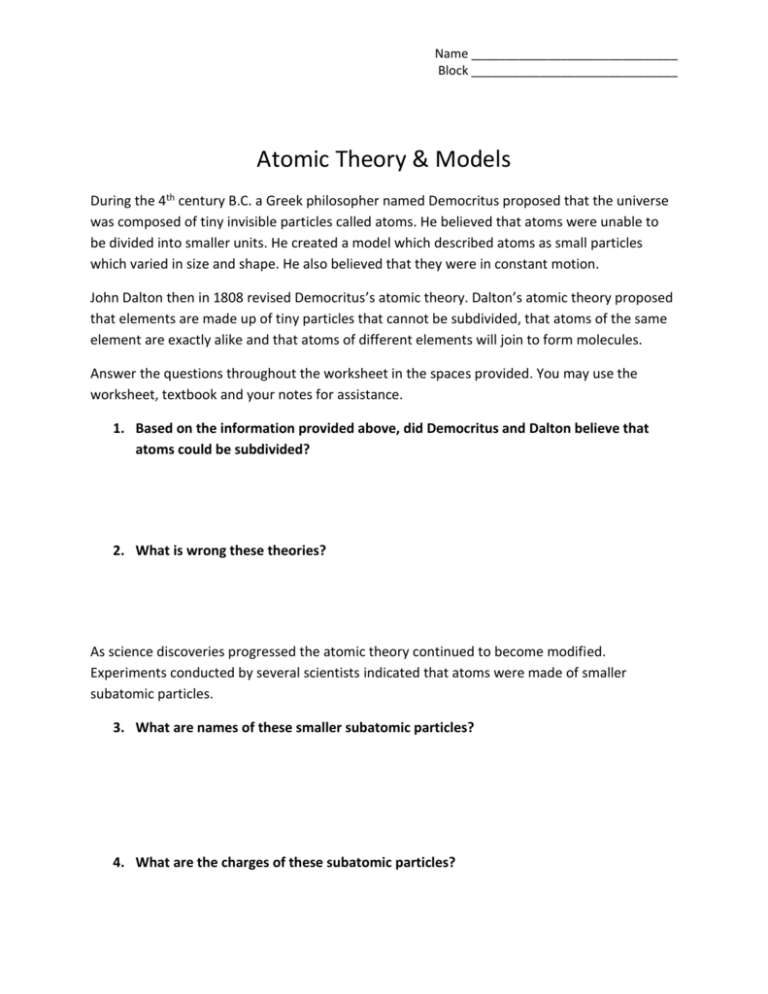
Name ______________________________ Block ______________________________ Atomic Theory & Models During the 4th century B.C. a Greek philosopher named Democritus proposed that the universe was composed of tiny invisible particles called atoms. He believed that atoms were unable to be divided into smaller units. He created a model which described atoms as small particles which varied in size and shape. He also believed that they were in constant motion. John Dalton then in 1808 revised Democritus’s atomic theory. Dalton’s atomic theory proposed that elements are made up of tiny particles that cannot be subdivided, that atoms of the same element are exactly alike and that atoms of different elements will join to form molecules. Answer the questions throughout the worksheet in the spaces provided. You may use the worksheet, textbook and your notes for assistance. 1. Based on the information provided above, did Democritus and Dalton believe that atoms could be subdivided? 2. What is wrong these theories? As science discoveries progressed the atomic theory continued to become modified. Experiments conducted by several scientists indicated that atoms were made of smaller subatomic particles. 3. What are names of these smaller subatomic particles? 4. What are the charges of these subatomic particles? Name ______________________________ Block ______________________________ In 1913 Niels Bohr created a model which proposed that electrons move around a set path around an atom. The path of the electrons appeared as shells around the nucleus of the atom. He also proposed that each electron contains a set amount of energy. The amount of energy then would determine the electron’s path (shell). He proposed that that in order for an electron to move to the next energy level it must gain energy. 5. In the space provided below draw a Bohr (shell) diagram for the following elements. a) Hydrogen b) Sodium b) Neon d) Calcium 6. What is wrong with Bohr’s theory? Name ______________________________ Block ______________________________ Only a short time after Bohr’s model was created, another theory was proposed. This theory was called the Modern Theory. The modern theory proposed that electrons do not move in a set path similar to planets orbiting the sun. In this theory electrons move in a wave-like motion. In this model the position, speed and direction of the electron cannot be determined. The region that these electrons move around in is called an electron cloud or orbital. 7. Draw an orbital diagram for the following elements. a) Boron b) Aluminum b) Phosphorous c) Lithium 8. Explain the difference between Bohr’s model and the orbital model. Which is a more accurate way of depicting electron movement? 9. How was Democritus correct in his initial observations during the 4 th century B.C.? How has the atomic theory advanced? Do you believe it is possible that there are still discoveries that could be made regarding atoms?
